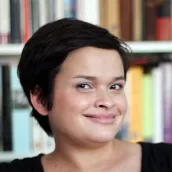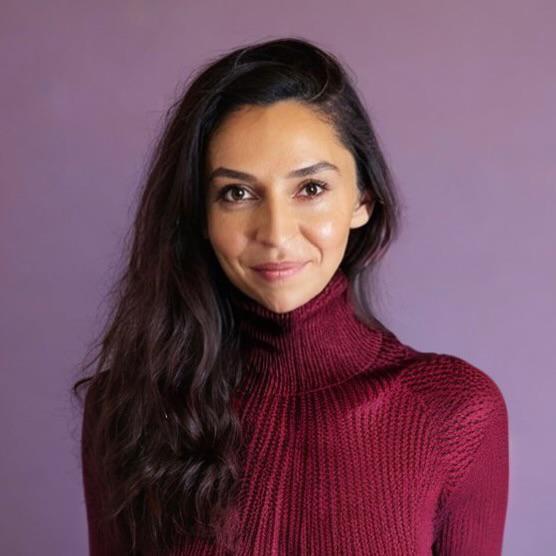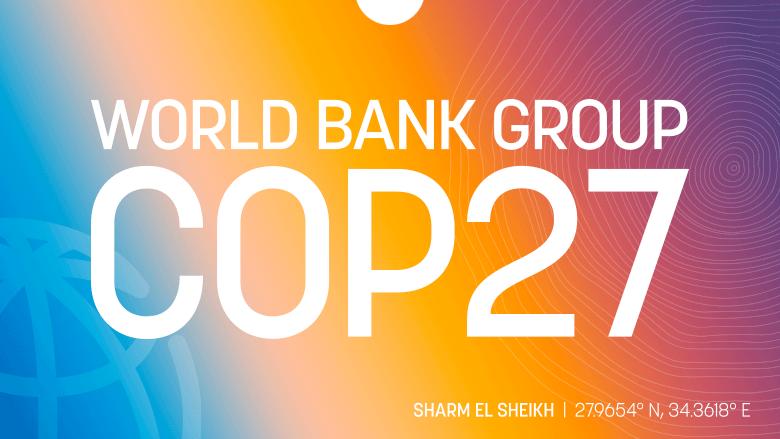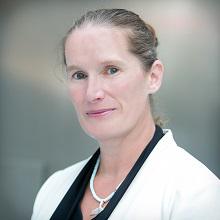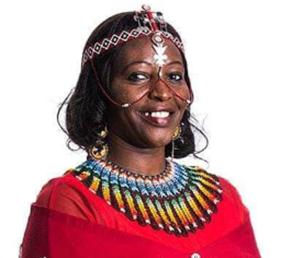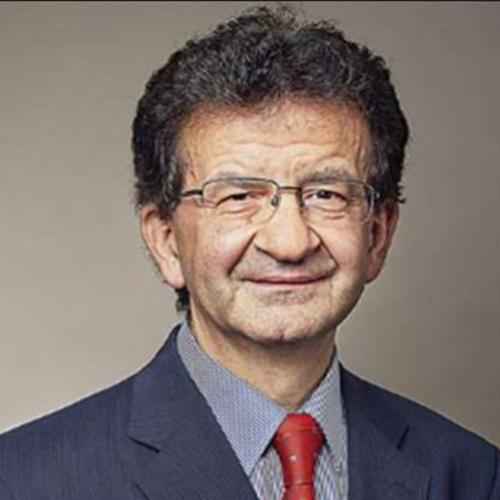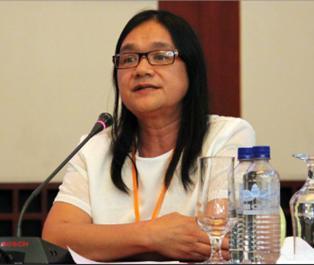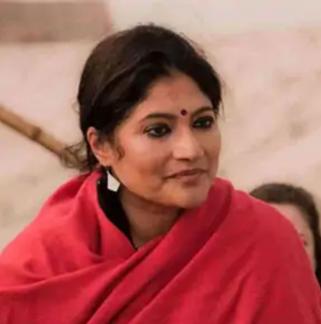Hello everyone, and welcome to our World Bank Live event - Women and Girls Are Key to Effective Climate Action. I’m Chiara Broccolini with the World Bank, and I am delighted to be moderating today’s live chat. We'll start the event in a few minutes. Please stay tuned and submit your comments and questions using the live chat.
Chiara Broccolini
We are joined today by our expert from the Gender and Climate Change Groups, Andrea Woodhouse, Senior Social Development Specialist, Gender, World Bank and Ezgi Canpolat, Social Development Specialist, Climate Change, World Bank who are online to answer your questions and will be sharing relevant resources.
Chiara Broccolini
This event will also be live-streamed on our World Bank Twitter and YouTube accounts.
Chiara Broccolini
While we wait for the event to begin, learn more about our new brief, Delivering for People and the Planet: Human Capital, Gender and Climate Change, which was just published.
Andrea Woodhouse
You can find the brief here: https://tinyurl.com/yc7uuddp
Andrea Woodhouse
Please continue to submit your questions and comments here on World Bank Live. You can also join the conversation on Twitter, using #ClimateActionWBG & #InvestinPeople.
Chiara Broccolini
Listed on this page you can see the speakers participating in today’s discussion.
Chiara Broccolini
Our moderator, Valerie Hickey, Global Director, Environment, Natural Resources and Blue Economy, the World Bank, welcomes and sets the stage.
Chiara Broccolini
We are really honored to have Ms. Agnes Leina, Founder and Executive Director of Il’laramatak Community Concerns (ICC) join us today.
Chiara Broccolini
Moving right along, we will now hear from Hana Brixi delivering keynote remarks, Global Director, Gender, World Bank
Chiara Broccolini
You can find further thoughts by Director Hana Brixi in a recent blog she co-authored with Jennifer Sara, Global Director, Climate Change, World Bank and Mary Porter Peschka, Director, Director, Advisory Solutions International Finance Corporation (IFC).
Ezgi Canpolat
You can find the blog here: https://tinyurl.com/3mprfbyb
Ezgi Canpolat
Climate emerged big issue in last few year due to that millions of people affected. how world will support the affected communities, to resettle?
zafar Abbas
Hi @Zafar, the World Bank's Groundswell report on climate migration identifies policy priorities for climate migration https://tinyurl.com/3hfeuwte - it finds that climate change could force 216 million people to move within their own countries by 2050 but that the right policy actions can help reduce this by 80%. Women are particularly affected by forced displacement: it can increase the risks of gender-based violence. So climate migration has important gender dimensions too. Thank you for raising the question.
Andrea Woodhouse
Valerie Hickey will moderate the conversation with:
- Ms. Mandy Rambharos, Commissioner, Presidential Climate Commission, South Africa; VP: Global Climate Cooperation, Environmental Defense Fund. Former General Manager: Just Energy Transition, Eskom Holdings
- Mr. Chris Antonopoulos, CEO, Lekela Power
- Ms. Grace Balawag, Indigenous Women Leader and Deputy Coordinator for Tebtebba
- Ms. Runa Khan, Founder and Executive Director, Friendship NGO
Chiara Broccolini
ESKOM Just Transition for Komati Project aims to: (i) decommission the Komati coal-fired power plant, (ii) repurpose the project area with renewables, and (iii) create opportunities for workers and communities during the transition process. The project was just approved by the World Bank board in November: https://tinyurl.com/23ads98h
Ezgi Canpolat
Women and Girls involvement in climate actions is truly key to achieving effective result. The impact also will be wonderful, It is good that they be empowered. Thank you so much.
Agada, Akwu Kingsley
can you explain why it is important to target women and girls more than men and boys for climate action? What are examples of specific contributions by women and girls and what can men and boys learn from those?
Antonin
Hi @Antonin. It is important to target women and girls because they are disproportionately affected by climate shocks and stresses. They experience structural inequalities compared to men and boys, which are exacerbated by adverse climate events in many countries. Women and girls are also affected differently by climate policies as they have unequal access to opportunities created by green transition. But this situation is not generalizable to every context. For example, boys can be more vulnerable and experience inequalities (e.g., in education) and they can need targeted support. See our report on closing gender gaps in Latin America and the Caribbean: https://tinyurl.com/2bvkc8vc
Despite their vulnerabilities, women are also important agents of climate action. For example, Indigenous women have some of the world’s richest traditional knowledge and practices that they have been using to build the resilience of their communities to climate shocks. They have often been organizers and leaders at the local level in the fight against climate change, despite limiting patriarchal norms. Learn more about it here: https://tinyurl.com/4rskhds7
Ezgi Canpolat
Through their Energy2Equal project, IFC collaborates with large, medium, and small firms to reduce gender gaps in the Renewable Energy (RE) sector workforce in Sub-Saharan Africa (SSA) and increase research and data on the business case for women’s participation. You can read a study about this initiative here: https://tinyurl.com/yamvpewk
Andrea Woodhouse
How far World Bank has included the youth in environmental mitigation
Ishmael Amini
@Ishmael. Young people (<25) make up nearly 42% of the world’s population and most of them live in lower- and middle-income countries where they’re particularly vulnerable to climate change impacts. Youth also have a critical role to play in climate mitigation and adaptation. The World Bank has been supporting the youth’s role in climate action. We support youth by improving their green skills, representation in Science, Technology, Engineering, and Math (STEM)-related education fields, and supporting their work-to-school transition to ensure employment in sectors such as Renewable Energy. We pay specific attention to intersectionality and focus on girls as they face specific normative barriers in pursuing education and employment in STEM-related fields. For instance, Bank’s WePOWER initiative in the South Asia region is promoting a normative change for girls in STEM education and employment in the energy sector. Since its launch in 2019, the program led to the recruitment of 690 interns, enrollment of 652 female students in study tours, participation of 7,637 female students in 92 STEM Outreach Workshops, and hiring of 328 women through job fairs, career counseling and mentorship. Learn more about this program here: https://tinyurl.com/2rskbkmj
Ezgi Canpolat
Read more about how DGM project in Ghana advanced gender equality and contributed to gender-transformative change here: https://tinyurl.com/mvyzx2r8
Ezgi Canpolat
Poor countries are facing huge problems to meet energy requirements and used coal and other cheap sources to meet its energy requirements. that was main cause of pollution, Is any way to world provide them alternative energy source?
zafar Abbas
Dear Zafar, the transition to renewable energy is extremely important: the energy sector produces three quarters of global greenhouse gas emissions, and coal combustion alone is responsible for nearly a third. As we expand energy access, we urgently need a global transition to low carbon energy. The World Bank is substantially scaling up financing for clean energy transitions around the world (you can read more in the Climate Change Action Plan here https://tinyurl.com/8d5b5bpd). It’s important that clean energy transitions—which will create jobs in renewables—are able to benefit women. Existing patterns of occupational sex segregation (women and men doing different work), skills gaps, and gaps in female labor force participation mean women may be at a disadvantage. Between 2015-2021, 66 percent of transitions into green jobs were made by men. To benefit from green jobs, people will need the right education and job-relevant skills, including in STEM, where women are under-represented.
Andrea Woodhouse
The World Bank is working with the Government of Bangladesh to reduce disaster risk and improve last-mile preparedness through a suite of coastal resilience investments. Read more about the here: https://tinyurl.com/5fkzdxk2
Andrea Woodhouse
Greetings from Chubashini Amirtham(Malaysia) . Would like to raise this question on the involvement of WBG with global educators to heightened the awareness among students related to Women and Girls are the Effective Key to Climate Action
Chubashini Amirtham
@Chubashini. Education is critical for climate change awareness and cultivating support for climate action. At an individual level, a heightened awareness of climate change through education can help not only students but their families also adopt climate-friendly behaviors and habits. The WBG is the largest financier of education in the developing world and the largest multilateral funder of climate action. We have promising examples of countries integrate climate education into their curriculum, an example of this is Colombia. The Bank also takes a broader approach to integrating climate change into education as through education we can build building green skills to prepare the youth for the green transition. The Bank has been implementing several education projects and programs that aim to improve the quality and provision of education with a focus on STEM subjects. It has been also engaging with research centers in the Africa region to offer programs in climate-related fields. Learn more about this work here: https://tinyurl.com/375bju9u
The Bank is supporting several projects to ensure equal opportunities for both girls and boys to acquire skills in STEM subjects, which are critical for them to engage in climate action. Learn more here: https://tinyurl.com/2mkkhnwt
Ezgi Canpolat
Can you discuss how MDBs can ensure that climate finance does not only deliver co-benefits but more importantly puts resources directly into women led action?
Zonibel Woods
@Zonnibel. It is critical to ensure that climate finance is delivered directly to the communities at the frontlines of the fight against climate change. It is critical to use bottom-up, community-led approaches in climate action. For instance, the Bank’s Financing Locally-Led Climate Action Program (FLLoCA) in Kenya delivers locally-led climate resilience actions and strengthens the county and national government's capacity to manage climate risks. Ninety percent of program funding from FLLoCA will be spent at county and community levels to ensure that support for climate resilience reaches those most at risk, including women, youth, persons with disabilities, elders, and other traditionally marginalized groups. Learn more about this project here: https://tinyurl.com/y4ytbfyv
The Dedicated Grant Mechanism (DGM) program, implemented by the World Bank and financed by Climate Investment Funds, is another example of community-led and inclusive climate finance delivery mechanism. As part of this program, 700 subprojects have been financed since 2015 and over a third are awarded to women or led by women. These are in twelve countries, including Burkina Faso, Ghana, and Mexico. Find more about how DGM put resources directly into women-led climate action here: https://tinyurl.com/2p8ta7tm
Woman participation World Bank Funded (MCLLMP) in the Meghalaya, India has an undeniable impact on development outcomes and social change, especially in the face of climate change
MEDINI BARUAH
MDBs can build on and learn from these experiences and implement similar initiatives in other contexts.
Ezgi Canpolat
This concludes our event. Thank you to all who tuned in!
Chiara Broccolini


